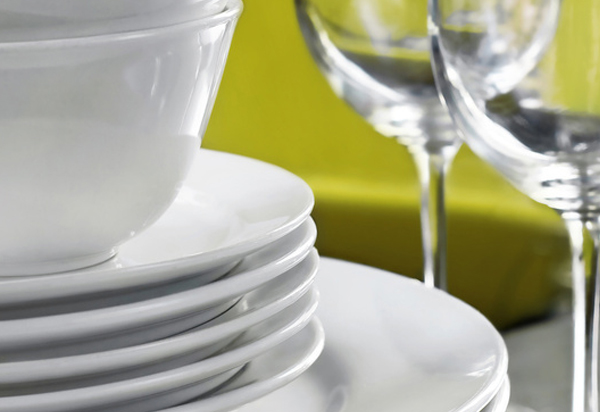How To Pack Your Kitchen


Here is a step-by-step guide on how to best pack your kitchen before your move, from dishes and plates to appliances. For more information on packing your household items like home decor and domestic plants, enter a keyword in the searchbar above or keep reading our series on packing your household goods, using the links at the bottom of this page.
What You’ll Need
- Tape gun (a.k.a. adhesive transfer gun)
- Permanent marker
- Blank newsprint sheets
- Blanket (or other protective covering)
- 2 or 4 cubic foot cartons
- China barrels
Preparing
- Read the tips and warnings at the bottom of this page before you proceed.
- Set up a workspace: use a blanket to protect the surface you will be working on (floor or table) and gather the items listed above.
- Select the right type of carton (heavy or light, fragile or sturdy) and determine the best size for the amount of items you need to pack. Lighter items can be packed in larger cartons, heavy items in smaller cartons. Very fragile items should be packed in sturdy cartons.
- Using your tape gun, seal the bottom of the carton so that it doesn’t give way unexpectedly.
- Pad the bottom of the carton with crumpled sheets of recycled newspaper (recommended: eight sheets).
Step 1: Packing Dishes and Other Kitchenware
- Begin filling the carton with your belongings, starting with the heaviest items. Once you’ve packed the bottom tier, cover it with a protective layer of newspaper.
- Wrap each dish, cup, glass, etc. separately and nest them together. Dishes should be placed in carton on edge, cups and glasses as they stand.
- Depending on the quality and finish of your utensils, most can be wrapped in bulk, but fragile expensive utensils should be wrapped individually to prevent scratching.
- Repeat the process, loading the carton with progressively lighter items.
- Once you have finished packing the carton, fill empty corners and other spaces with crumpled-up newspaper to avoid your items shifting during their transfer to the new location.
- Fold top flaps into position, then seal them securely using your tape gun. It is also recommended to join each corner of the carton with long strips of tape to avoid cartons breaking open.
- Using a permanent marker, identify the contents of each carton (i.e. “Plates”; “Utensils”; etc.) in large print at the top of the sealed carton.
- Label necessary cartons with “Fragile” to avoid mishandling and place arrows on fragile cartons indicating “This way up”.
Step 3: Packing Kitchen Appliances
- Unless the appliance is heavy, a larger size carton works best for small appliances.
- Place crumpled newsprint in bottom of carton.
- Wrap each appliance and tape if necessary.
- Place heavy appliances in carton first, then lighter items.
- Fill empty spaces with crumpled newsprint.
- Keep cords with appliance if they are separate so that matching them up is easy during unpacking. Use twist ties to wrap cords.
- Label the carton with contents and room to be placed at destination.
Step 4: Packing Food
- The first step is to eliminate liquids especially if they are open already or are in glass containers. Give to friends and family as they can leak onto upholstery or finished surfaces and cause more damage that what they are worth. Plus you are saving time, lightning the load, so saving money too.
- If the liquids can freeze during transport (winter), then leave all liquids out of the load.
- Tape the openings of any dry food that has been opened already.
- Place heavy items like canned and glass containers in bottom of carton, light items like cereal and pasta on top. Wrap glass items to reduce breakage.
- If your move is a short distance then there is a possibility of placing frozen or refrigerated items in a cooler to transport. Unloading the freezer just prior to loading and placing frozen items back inside right away could also work, but this should be the last item loaded, thus the first off the truck. But using these items up by throwing a party for family and friends lightens the load and saves you some time and money.
- Give any non perishable unopened item to a food bank and you will save time and money and do a good thing for others.
- Load heavy items in smaller sturdy cartons and lighter items in larger less sturdy cartons.
Tips & Warnings
- Always pack your lesser-used items first prior to the move.
- If you are using grocery store cartons to pack, see what they were originally designed to carry from the labeling. This will give you an idea of the strength of the cardboard and glue and what you can pack in them safely.
- Liquor cartons are sturdy and good for heavy items and fragile china. Cartons intended for tissue and paper towels are good for Tupperware, towels and cereal.
- Always use blank newsprint sheets, as the ink from regular newsprint sheets can permanently damage your items.
- Separate each tier of items with protective sheets of newspaper.
- Take notice of which end of the carton is marked “Top” to avoid carrying the carton upside-down once it is packed.
- Build a bottom layer of dishes whenever possible.
- When packing small items, wrap them in different-coloured paper so they are not mistakenly thrown away during unpacking.
- Do not load each carton to capacity; make sure that it is not too heavy to be safely handled and distribute heavy items evenly into separate cartons.
- Save twist-ties to wind up electrical cords, making them easier to handle.
- Do not pack flammables, bleach, toxic supplies or other chemicals.
Part of a series on packing your household goods, including:
Comments are closed.
